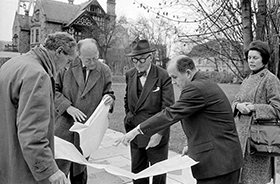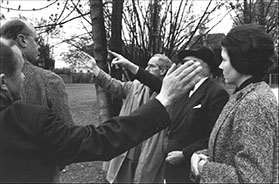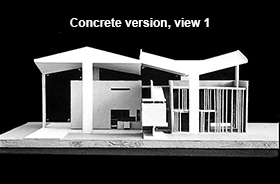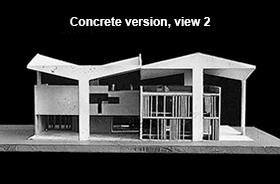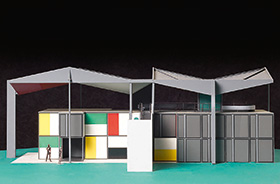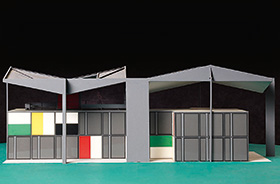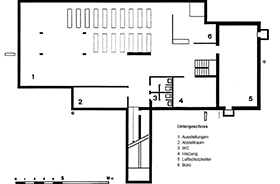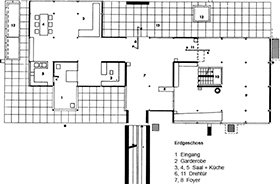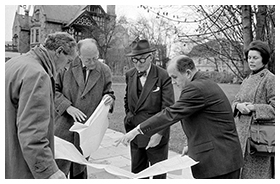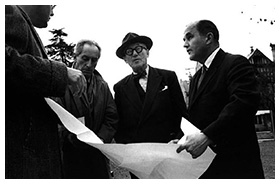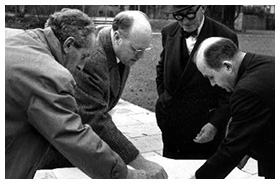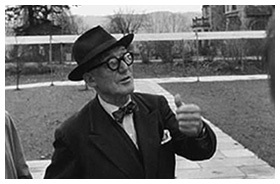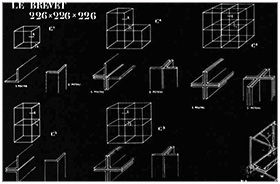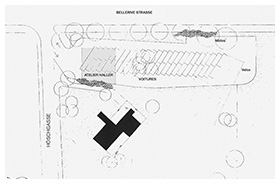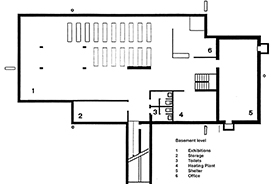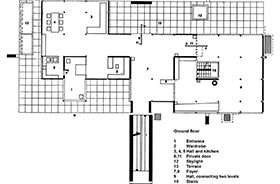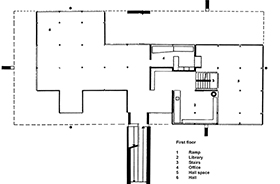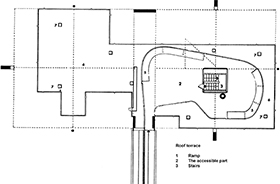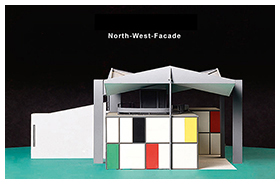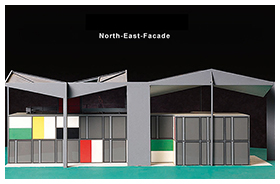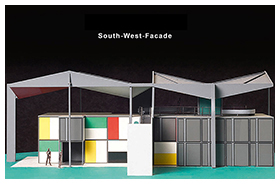The Masterpiece
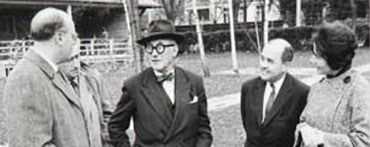
Heidi Weber, the visionary woman, with Le Corbusier and high-ranking city representatives of Zurich on the "Blatter Wies"
Based on friendship and trust and on mutual respect and admiration, the seven year cooperation between Le Corbusier and Heidi Weber enriched the architectural history of the century with a belated masterpiece by the architect, Le Corbusier. This world-famous building, a unique creation made of metal and glass and created according to Modulor standards, is also known as the Heidi Weber Haus – Centre Le Corbusier.
Planning Phase
-
1.
From the first sketch up to the masterpiece
This sketch from Le Corbusier’s sketch pad is one of the first examples of this architectonic form. It was designed for the Liège Exhibition.
-
2.
On-the-spot inspection check
Viewing the construction site November 25th, 1960. (l. to r.) A. Wasserfallen, Director of the City’s Buildings Department; Le Corbusier; P. Binden, Head of the Garden and Parks Department and Heidi Weber.
-
3.
Le Corbusier's first planning
In 1961, Le Corbusier first proposed a building in concrete. However, in April 1962, he proposed a new version in steel and glass, following the suggestions of Heidi Weber (who, once again, displayed an active role in the project).
-
4.
The final construction in steel and glass
Heidi Weber declared: “To me, metal represented the new, the modern. I thought of concrete as belonging to a past period.” LC's unique building in this material combination will go down in the history of architecture.
-
5.
Floor plans
The return to the notion of a metallic building was also a decisive factor for Le Corbusier, as it offered him an opportunity to put the construction system based on cubic (2.26 meters on each side) into practice. This was created according to the Modulor measures.
1926
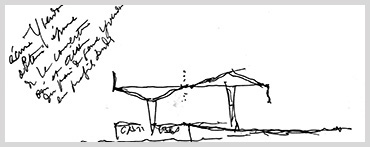
1960 — 1964
